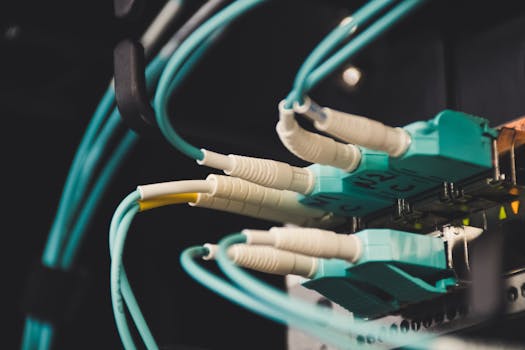
Transmitting Data at the Speed of Light: The Promise of Flexible Glass Fiber Technology
Flexible Glass Fiber Technology is transforming the way we transmit data, enabling faster and more reliable connections. With the increasing demand for high-speed data transmission, flexible glass fiber technology is becoming a crucial component in modern telecommunications. In this article, we will explore the promise of flexible glass fiber technology and its potential applications.
Flexible glass fiber technology uses thin strands of glass or plastic to transmit data as light signals. This technology has been around for decades, but recent advancements have made it more flexible, reliable, and cost-effective. Flexible glass fiber cables can be bent and twisted without breaking, making them ideal for use in a variety of applications, including telecommunications, medicine, and industrial automation.
The Benefits of Flexible Glass Fiber Technology

Flexible glass fiber technology offers several benefits over traditional copper-based transmission methods. It can transmit data at speeds of up to 100 Gbps, making it ideal for high-bandwidth applications such as video streaming and online gaming. Additionally, flexible glass fiber cables are thinner and lighter than copper cables, making them easier to install and maintain. They are also more resistant to electromagnetic interference and can transmit data over longer distances without degradation.
Another significant advantage of flexible glass fiber technology is its potential to enable the creation of more flexible and wearable devices. For example, flexible glass fiber cables can be used to create wearable devices such as smartwatches and fitness trackers that can transmit data in real-time. This technology can also be used to create flexible displays and sensors that can be used in a variety of applications, including medical devices and industrial automation.
Applications of Flexible Glass Fiber Technology

Flexible glass fiber technology has a wide range of applications in various fields, including telecommunications, medicine, and industrial automation. In telecommunications, flexible glass fiber cables can be used to create high-speed networks that can transmit data at speeds of up to 100 Gbps. This technology can also be used to create flexible and wearable devices such as smartwatches and fitness trackers that can transmit data in real-time.
In medicine, flexible glass fiber technology can be used to create medical devices such as endoscopes and catheters that can transmit images and data in real-time. This technology can also be used to create wearable devices that can monitor a patient’s vital signs and transmit data to healthcare professionals in real-time.
In industrial automation, flexible glass fiber technology can be used to create sensors and systems that can monitor and control industrial processes in real-time. This technology can also be used to create flexible and wearable devices that can be used to monitor and control industrial equipment.
Conclusion

In conclusion, flexible glass fiber technology is transforming the way we transmit data, enabling faster and more reliable connections. With its potential to enable the creation of more flexible and wearable devices, this technology has a wide range of applications in various fields, including telecommunications, medicine, and industrial automation. As research and development continue to advance, we can expect to see even more innovative applications of flexible glass fiber technology in the future.



